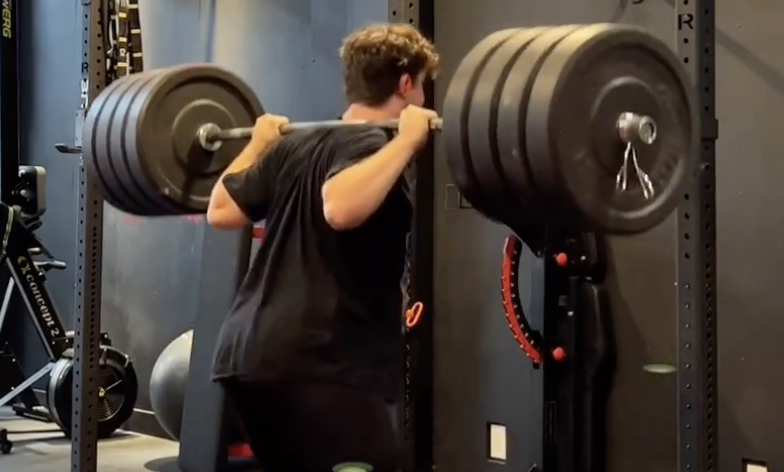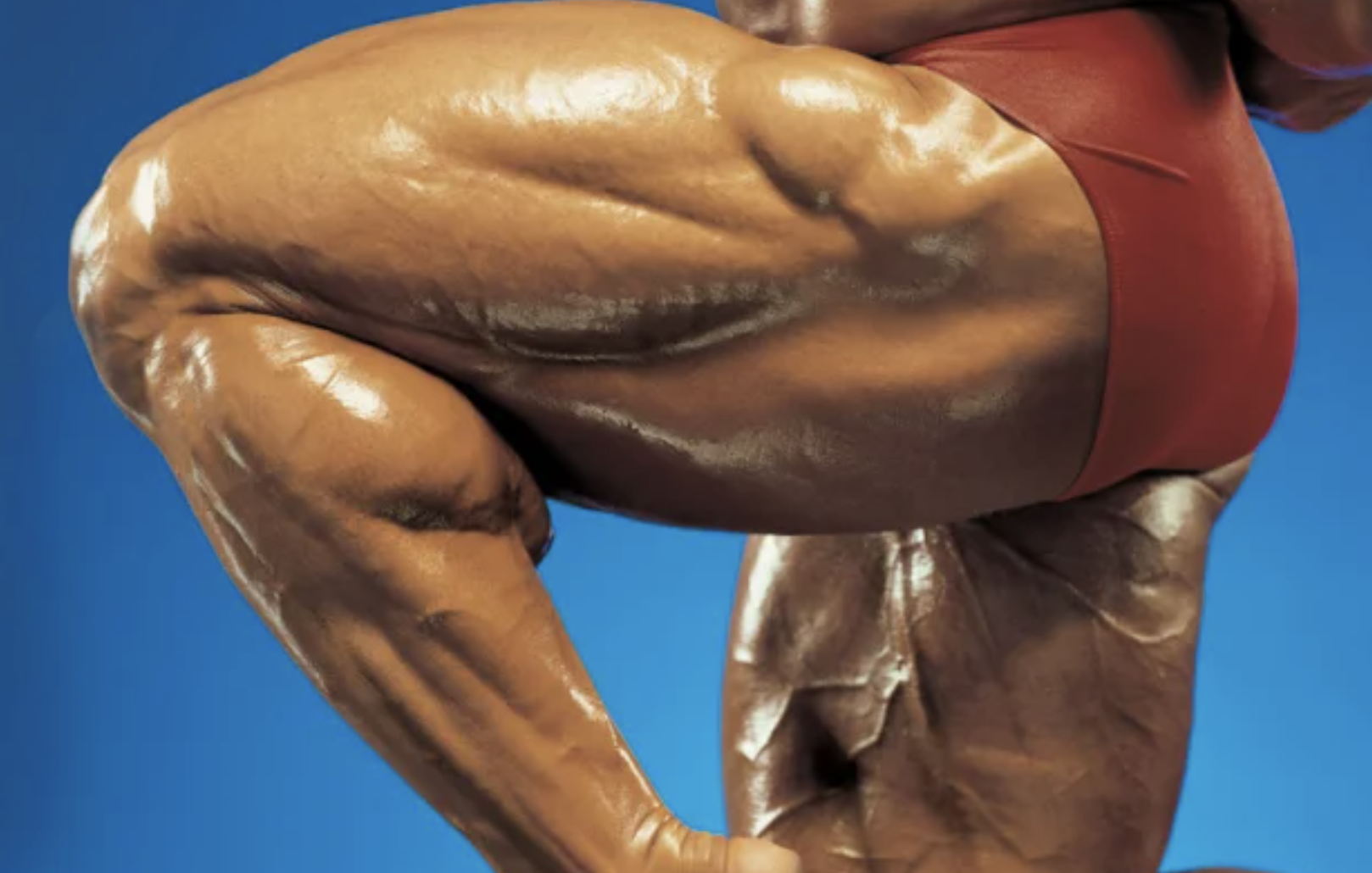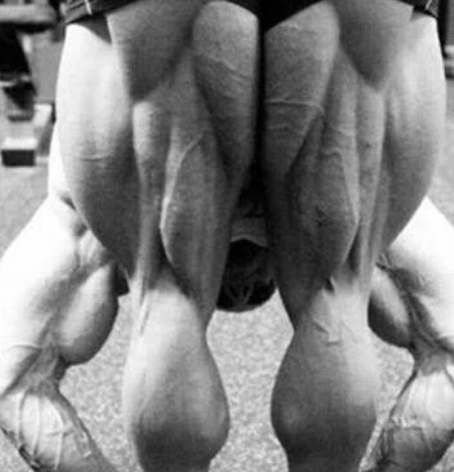Best Hamstring Exercises: Top 6 for Strong Legs
Written by The Boostcamp Editors
Top 6 Best Hamstring Exercises for Strong Legs
Strong, defined hamstrings are crucial for overall leg strength and performance. The hamstring muscles play a vital role in daily activities such as running, jumping, and even walking, making them a truly functional muscle group. Strong hamstrings also transfer over to other lifts, such as squats and deadlifts. Let's take a look at the anatomy of the hamstrings, their importance, and the top 6 best hamstring exercises you can incorporate into your routine to strengthen them. From lying leg curls to stability ball hamstring curls, we have covered everything you need to know about these exercises. We have also included modifications and common mistakes to avoid while performing them. Additionally, we will also explore how strengthening your hamstrings can improve running efficiency and other benefits associated with it.
So, let's get started on building those strong legs!
Importance of Strong Hamstrings

Strong hamstrings are essential for lower body strength and stability, as they are a key muscle group in leg exercises that include leg presses and hack squats, as well as the aforementioned squats and deadlifts. However, the hamstrings also play a crucial role in preventing injuries like hamstring strains. Additionally, well-developed hamstrings can greatly enhance athletic performance in sports that require explosive leg power. Not only do strong hamstrings improve your posture, but they also contribute to lower back health. By incorporating hamstring exercises into your workout routine, you can improve overall leg strength and ensure that all the muscles in your lower body are working together harmoniously.
Strengthening your hamstrings is vital for maintaining balance and stability, especially when performing exercises in a standing position. So, don't neglect this important muscle group on leg day! A proper training routine will have you hitting hamstrings weekly. Remember, consistency is key, so aim for sets of each exercise with proper form to get the most out of your training.
Role in Sports Performance
Strong hamstrings play a crucial role in sports performance, particularly in activities that require explosive movements, such as sprinting and jumping. They contribute to your ability to generate power and speed, allowing you to excel in sports like soccer or basketball, but they even are required in sports like Olympic Weightlifting. Well-developed hamstrings also improve your agility and coordination, enabling quick changes in direction on the field or court.
In addition, strong hamstrings help prevent injuries by stabilizing the knee joint and reducing the risk of strains. They provide support and balance, especially during high-intensity movements. Weak hamstrings, on the other hand, can increase the likelihood of injury and limit your athletic performance.
By incorporating exercises that target the hamstring muscle group into your strength training routine, you can enhance your overall sports performance. These exercises, such as Romanian deadlifts and sumo squats, effectively target the hamstrings and promote functional strength. Remember to focus on proper form and technique to maximize the benefits of these exercises.
Tight hamstrings can be a common issue, especially among athletes and young adults. Regularly performing hamstring exercises can help improve flexibility and prevent tightness, enabling a wider range of motion and reducing the risk of muscle imbalances. Aim to perform 3-4 sets of each exercise, gradually increasing the intensity and weight as you progress.
To put it simply, developing strong hamstrings is essential for optimal sports performance. By incorporating specific exercises into your workout routine, you can enhance your speed, agility, and overall athletic ability.
Contribution to Overall Leg Strength
Strong hamstrings are essential for maintaining balanced leg muscles and overall lower body strength. They work in harmony with your quadriceps, creating muscle equilibrium in your thighs. By strengthening your hamstrings, you can significantly enhance your ability to perform exercises such as squats and deadlifts, which are fundamental movements in strength training. Additionally, building hamstring strength allows you to increase your lower body strength, enabling you to lift heavier weights and challenge yourself further in your workouts. Not only do well-developed hamstrings contribute to your physical strength, but they also improve muscle definition and the aesthetic appearance of your legs. Incorporating exercises that target the hamstring muscle group into your leg day routine is a great way to optimize your overall leg strength and achieve your fitness goals.
Anatomy of Hamstrings

The hamstrings consist of three main muscles: the biceps femoris, semitendinosus, and semimembranosus. These muscles are located at the back of your thighs, starting from your hip joint and extending to your knee joint. They play a crucial role in knee flexion, hip extension, and overall lower body movement. Strengthening your hamstrings is important as it can improve your posture by stabilizing your pelvis and lower back. Additionally, the hamstrings are an integral part of your posterior chain, which includes muscles like the glutes and lower back. By strengthening your hamstrings, you can enhance your performance in strength training exercises such as the Romanian deadlift or the sumo squat. They are a great exercise to target the hamstring muscle group and can be performed in a standing position with both feet on the ground.
Major Muscles Involved
The muscles responsible for the strength and functionality of your hamstrings are the biceps femoris, semitendinosus, and semimembranosus. Found at the back of your upper leg, the biceps femoris is an important component of the hamstring muscle group. Along the inner side of your hamstring, you'll find the semitendinosus, which aids in knee flexion. Supporting hip extension, the semimembranosus is located on the inner back of your leg. These muscles work in harmony to flex your knee, extend your hip, and stabilize your lower body. Strengthening them through exercises like the Romanian deadlift and standing leg curls can significantly enhance your hamstring strength, stability, and overall leg function, contributing to stronger and more functional legs.
Exercise 1: Lying Leg Curl
The lying leg curl is a fantastic isolation exercise that specifically targets your hamstrings. To perform this exercise, start by lying face down on a leg curl machine and place your ankles under the leg pad. Slowly curl your legs up towards your glutes, focusing on engaging and activating your hamstring muscles. Take a brief pause at the top, then slowly lower your legs back to the starting position while maintaining control throughout the movement. Remember to perform each repetition with proper form and a full range of motion to maximize the activation of your hamstrings.
Lying leg curls are a great addition to any strength training routine, especially for those looking to strengthen their hamstring muscle group. This exercise helps increase the strength and stability of your hamstrings, which can improve your overall leg strength. It is a particularly beneficial exercise for athletes and young adults who participate in sports or activities that require strong hamstring muscles. Performing lying leg curls as part of your leg day routine can help target and strengthen the back of your body, including your hamstrings, glutes, and lower back. Aim for several sets of each exercise during your workout and remember to listen to your body to prevent any potential injuries.
Steps to Perform
To perform the best hamstring exercises with proper form and effectiveness, follow these steps:
Start by adjusting the leg curl machine to your height, ensuring that your knee joint aligns with the machine's axis of rotation.
Lie face down on the machine, making sure your chest, thighs, and upper body are comfortably resting against it.
Secure your lower legs, from your calves to your ankles, under the leg pad to keep your lower body in place.
With your shoulder blades pulled back, initiate the leg curl motion by flexing your knees and curling your lower legs upward.
Lower your legs slowly and in a controlled manner to the starting position, maintaining proper form and engaging your muscles throughout the movement.
Performing the steps correctly is crucial to maximize the benefits of hamstring exercises. It ensures that your hamstring muscle group is targeted effectively, improving strength, stability, and overall leg function. Adding variation to your leg curls, such as the Romanian deadlift or the standing single-leg curl, can further enhance the workout. Incorporating these steps into your leg day routine is a great way to strengthen your hamstrings and promote better performance in sports and other physical activities. Remember to listen to your body and adjust the intensity and sets of each exercise based on your fitness level and goals.
Exercise 2: Hamstring Slide
The hamstring slide is a bodyweight exercise that targets your hamstrings, lower back, and glutes. To perform this exercise, start by lying on your back with your knees bent, feet hip-width apart, and your arms by your sides. Engage your core and lift your hips off the ground, creating a bridge position.
Extend your right leg, sliding your foot forward while keeping your hips lifted. Focus on engaging your hamstring muscles as you bend your right knee, sliding your foot back towards your body. This sliding motion mimics the movement of a leg curl machine, effectively targeting your hamstring muscle group.
To work both your left and right hamstrings effectively, repeat the exercise, alternating legs. By incorporating the hamstring slide into your leg day routine, you can strengthen and tighten your hamstrings, improving their flexibility and function. This exercise also helps to activate the glutes and lower back, making it a great addition to any strength training program.
Benefits of the exercise
The hamstring slide exercise offers a multitude of benefits for your lower body strength and stability. By engaging your hamstrings, it helps you develop a stronger posterior chain which includes your glutes and lower back muscles. This exercise also contributes to the improvement of your hip hinge movement pattern, crucial for performing movements like deadlifts. One of the advantages of the hamstring slide is its versatility, allowing you to perform it anywhere, whether you're at home or on the go. Consistently incorporating hamstring slides into your routine can lead to enhanced hamstring strength, improved muscle endurance, and overall leg function. This exercise is particularly great for individuals with tight hamstrings or those looking to target the hamstring muscle group in their leg day workouts. Remember to perform multiple sets of each exercise for maximum effectiveness.
Exercise 3: Stiff-Legged Deadlift
The stiff-legged deadlift is a compound exercise that targets your hamstrings, glutes, and lower back. To perform this exercise, start in a standing position with your feet shoulder-width apart and hold a barbell or dumbbells in front of your thighs. Keep your back straight and hinge at the hip joint, leaning your upper body forward and lowering the weight. Continue to lower until your upper body is parallel to the floor, feeling a stretch in your hamstrings.
Engage your hamstrings, glutes, and lower back muscles as you return to the starting position, standing tall. The stiff-legged deadlift is a great exercise for strengthening your hamstrings and posterior chain muscles. It can help improve your overall leg strength and stability. Make sure to maintain proper form and control throughout the exercise. Performing sets of stiff-legged deadlifts can effectively work your hamstring muscle group and contribute to your strength training routine.
Common Mistakes and How to Avoid Them
Avoiding common mistakes is crucial for optimizing your hamstring exercises and preventing potential injuries. One common mistake to avoid is poor form, as it can put unnecessary strain on your hamstrings and increase the risk of injury. Instead, focus on maintaining proper posture throughout each exercise, keeping your spine aligned and shoulders back.
Another important factor to consider is your experience level. It's essential to select exercises that match your fitness level to avoid overexertion or strain. Starting with lighter weights and gradually increasing intensity can help reduce the risk of injury, especially if you're new to strength training.
Additionally, paying attention to your range of motion is key for an effective hamstring workout. Make sure to perform the exercises through a full range of motion, focusing on both the concentric (contraction) and eccentric (lengthening) phases. This can help target the entire hamstring muscle group and optimize your results.
By being mindful of these common mistakes and incorporating proper technique and exercise selection, you can maximize the benefits of your hamstring exercises and achieve stronger, more resilient legs. Remember to always prioritize safety and listen to your body's limits.
Exercise 4: Stability Ball Hamstring Curls
Strengthen your hamstrings with stability ball hamstring exercises. Engage your hamstring muscles by curling your legs towards your glutes. To maintain proper form, keep your shoulder blades on the floor and ensure a straight line from your shoulder blades to your knees. Performing hamstring exercises on a hardwood floor can provide stability during your workout. Stability ball hamstring curls are a great exercise that targets the hamstring muscle group. This exercise is especially beneficial for young adults who participate in sports or engage in strength training. By including stability ball hamstring curls in your leg day routine, you can effectively work the back of your body and improve the strength and flexibility of your hamstrings. Add sets of stability ball hamstring curls to your workout for a well-rounded leg workout.
Variation with Dumbbells
Looking for an extra challenge in your hamstring exercises? Try incorporating dumbbells into your routine. By holding the dumbbells close to your body during leg curls, you can engage your hamstrings even further. As you bend your knee and lower the weight towards your glutes, you'll feel the burn in your hamstring muscle group. Remember to maintain proper form and control throughout each repetition. Focus on the motion, keeping your chest height and your feet in a standing position. As you straighten your leg back to the starting position, you'll notice the strength training benefits of this variation with dumbbells. Whether you're a young adult or a seasoned fitness enthusiast, this exercise is a great addition to your leg day routine. So grab those dumbbells and give your hamstrings a workout they won't forget.
Exercise 5: Nordic Hamstring Curl
Looking to strengthen your hamstrings? The Nordic hamstring curl exercise is a great option. This exercise helps you engage and activate your hamstring muscle group while focusing on proper form and controlled movements.
For beginners, there's a modification that involves using upper body strength for assistance. Start in a kneeling position and lower your upper body towards the floor. As you do this, engage your hamstrings and focus on maintaining a controlled motion. Once you've reached the bottom position, push back up using your upper body strength.
Remember to pay attention to your form throughout each repetition. Keep your core engaged and make sure you're feeling the tension in your hamstring muscles. The Nordic hamstring curl is a fantastic exercise to include in your leg day routine, especially if you have tight hamstrings. Give it a try and feel the burn in the back of your body!
Modifying the Exercise for Beginners
If you're a beginner looking to strengthen your hamstrings, there are several ways to modify hamstring exercises to gradually increase your strength. One approach is to use your upper body strength to assist in exercises like the Nordic hamstring curl. Begin with a slight bend in your knee and lower your upper body slowly, focusing on proper form, range of motion, and hamstring muscle activation. As you progress and your strength improves, you can gradually decrease the assistance from your upper body. This gradual progression allows you to build strength in your hamstrings while maintaining proper technique. Remember, when modifying exercises for beginners, it's important to start with manageable weights or resistance and progress at a pace that feels comfortable for you. By incorporating these modifications, you can effectively work your hamstrings and develop stronger legs.
Exercise 6: Glute-Hamstring Raises
Looking to strengthen your hamstrings? Glute-hamstring raises are a great exercise to add to your leg day routine. Start by positioning yourself in a bridge, with your shoulder blades resting on a bench. Engage your hamstrings as you lower your body towards the floor. Then, use your hamstring muscles to raise your body back up to the starting position. Throughout each repetition, focus on maintaining good form, a proper hip hinge, and activating the hamstring muscle group.
Glute-hamstring raises are particularly effective for targeting the back of your body, including your hamstrings. This exercise can be a challenging one, especially if you have tight hamstrings or are just starting out with strength training. However, with proper form and consistent practice, it can greatly improve the strength and stability of your hamstring muscles.
Incorporating sets of glute-hamstring raises into your workout routine can be a beneficial addition to your leg day. So give this exercise a try and feel the burn in your hamstrings!
Precautions while Performing
When performing hamstring exercises, it's essential to prioritize proper form and technique to avoid potential injuries. To ensure a safe and effective workout, there are a few precautions to keep in mind. First and foremost, avoid using poor form, such as rounding your lower back or lifting weights that are too heavy for your capabilities. Instead, focus on maintaining good posture, engaging your core, and hinging at your hips to activate the hamstring muscle group properly. It's also important to listen to your body and start with lighter weights, gradually increasing the intensity as you build strength. If you experience any pain, discomfort, or muscle tightness, it's crucial to consult with a professional who can provide guidance and address any concerns. Taking these precautions will help you get the most out of your hamstring exercises while safeguarding against potential injuries.
What are the Other Benefits of Strengthening Your Hamstrings?
Strengthening your hamstrings goes beyond just leg strength. It improves posture, provides lower back support, and enhances stability. Strong hamstrings also help in maintaining proper squat form, strengthening the inner thighs, and improving overall lower body strength. Additionally, they reduce the risk of lower back pain by balancing muscle strength and contribute to enhanced athletic performance and injury prevention.
Workout Programs
Now when it comes to finding some great workout routines for you to strengthen your hamstrings and increase the size, you can check out the Boostcamp App. Boostcamp allows you to choose from over 50 free workout programs that cater to your goals, whether you want to cut down, bulk up, or something else. You also can create your own program that is made exactly how you want it.
No matter what you choose, you can also track your progress to make sure you are on the right track.
Best Hamstring Exercises Conclusion
In conclusion, strong hamstrings are crucial for overall leg strength and sports performance. Incorporating exercises like lying leg curls, hamstring slides, stiff-legged deadlifts, stability ball hamstring curls, Nordic hamstring curls, and glute-hamstring raises can help you strengthen and tone your hamstrings effectively. These exercises target the major muscles of the hamstrings and improve running efficiency. Along with that, they also contribute to better posture, injury prevention, and enhanced athletic performance. So, whether you're an athlete or someone who wants stronger legs, don't forget to include these top 10 hamstring exercises in your workout routine. Get ready to feel the burn and enjoy the benefits of stronger hamstrings!
Be sure to follow Boostcamp on Instagram and subscribe on YouTube!

Images Courtesy of Tom Platz and Ivan Escott

